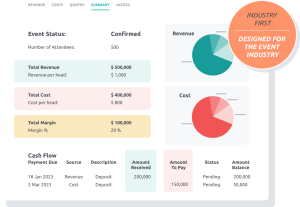We are up to our heinies and hairdos with all kinds of experts telling us that conferences and events can and should pivot to virtual. We will go out on a limb and say that we agree. Conferences and events should go online in order to keep members and attendees informed, updated, and educated during the Covid-19 crisis. The expert advice is timely but not always actionable.
The experts advice, through no fault of their own, is viewed through a tech savvy lens. This scares the heck out of executive directors, meeting planners, and membership directors, all across the association, nonprofit, and conference planning world. Why? Because the advice is detailed, technical, and paints a picture of perfection that can be light-years beyond what many small or financially strapped organizations are able to accomplish.
The talk of Key Performance Indicators (KPIs), high production values, virtual hosts, and multi-cam streams can cause an overwhelming case of analysis paralysis, fear, and second guessing. Before you know it, the excitement of trying to produce a virtual event has come to a standstill, especially if the final decision makers are the type of people that have a hard time understanding how to open an email, never mind what a zoomamajiggy thingy does.
We think it can be better to implement a “small wins” approach, it goes something like this, do what you can do and do no more because done is better than perfect.
Learn to Swim Before Diving into the Virtual Conference Pool
When Covid19 started blazing across the planet, many clients jumped right into the deep end of the virtual pool. These are organizations with seasoned staff, marketing departments, and an understanding of how technology affects member experience. These clients have produced virtual or hybrid events in the past or have been contemplating an online move for some time. Working together, we are producing multi-day, multi-track conferences that include breakouts, exhibit halls, and sponsored networking. The production value is off the chart. In order to keep up, I have converted my home office into a production studio. Lots of cameras, green-screens, gizmos, and thingamaboppers.
While this looks really cool, the reality is, most clients are not ready to dive into the deep end. Most need us to help them dip their toes into the water so they can see what is what and what goes where. A virtual event swim lesson if you will. Watching the light-bulb go on for someone who has a hard time booting up their phone is an experience like no other. Now I know why my swim coach kept pushing for all those years. Realizing I finally understood the Butterfly must have felt like he was conquering Mount Everest.
What does Virtual Event Success Look Like?
Putting on the floaties is different for every group. Virtual Townhalls, a simple Facebook Live session, or a simple audio recording can be a turned into a huge success. In the case of a Townhall style event, our goal is to help three or four panelists get online via Zoom where they have a 45 minute conversation and then some Q and A with the audience. Most of what goes into this type of virtual event is already second nature to the client. The online registration, a member or nonmember rate, and the email communication all fall within the client’s knowledge wheelhouse so implementation is fast and painless.
This leaves us the time to work on what they don’t know. We can host one or two short rehearsals and coach inexperienced speakers and panelists on where to sit in relationship to their laptop camera, how they might place a lamp or two for better lighting, and why headphones are a step up in audio. That’s about it, there is no need to get all technical and crazy on the first go round. We almost want to achieve zero production value because it means there is no exceptional overhead. What these organizations get in return is quality content that can be viewed live where attendees will get real value out of the session. This will keep them coming back for more.
Moving Past the Virtual Event Basics
After the toes are wet, now we encourage clients to move up to the ankles. We might keep the same format but work with better lighting, we might ask them to try a new background, or we help them up the social marketing game. The key to creating amazing virtual experiences is to build on the success (or failure) of the last event. Before you know it, a few weeks have gone by and they are in the virtual pool up to their waist. Now is the time to take advantage of what the experts are teaching. This becomes possible because they have an understanding of the basics and clear insight into what the attendee experience can be if they take the plunge.
Soon, that client that was afraid to speak on camera is asking about upping the production value, if I think a Yeti microphone is worth the investment, or if I think Zoom is a better platform than WebEx. Once you comfortable with the temperature of the water and know how to swim, you can dive as deep as you want, but you will never again worry about getting started which is always the hardest part.
Sometimes you swim for fun, sometimes you swim to win, either way, you swim to live.





